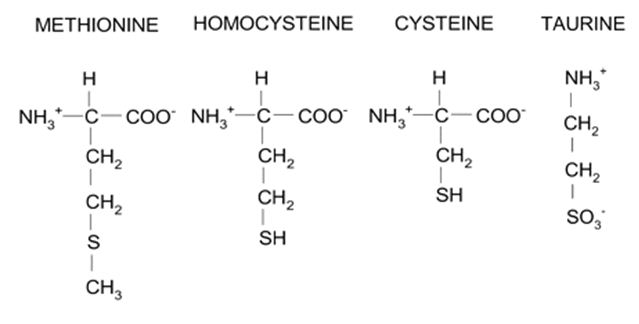"O/L Biology 2019 question one" 2019: Paper 2
(a) State the chemical composition of the following
(i) Proteins
(ii) Fats
(iii) Carbohydrates. (3,3,3 marks)
(b) How do you test for?
(i) The presence of reducing sugars in germinating maize seeds?
(ii) The presence of fats in meat?
(iii) The presence of protein in meat? (5,3,3 marks)
(Total = 20 marks)
(a) State the chemical composition of the following (3,3,3 marks)
(i) Proteins are made from amino acid monomers comprising of Carbon (C), Hydrogen (H), Oxygen (O), Nitrogen (N), Sulphur (S) and sometimes Phosphorus (P). (Add a picture)
(ii) Fats are made from Amino acids and Glycerol, they are composed of Carbon (C), Hydrogen (H) and Oxygen (O) only.(Add a picture)
(iii) Carbohydrates are made up of sugars, they comprise of Carbon (C), Hydrogen (H) and Oxygen (O) only. (Add a picture)
FURTHER EXPLANATIONS
Proteins are polymers of amino acids. The amino acids are so called because they have 1 or 2 amine function(s) (-NH2) and 1or 2 carboxylic acid functions (-COOH). This gives them the possibility to act both as bases and as acids. This is one of the reasons why proteins are sensitive to pH. The sulphur and Phosphorus are brought by some extra functions to through some amino acids. These elements, particularly sulphur helps to give the protein its shape with the help of disulphide bonds.

Fats are produced from 2 building blocks; fatty acids which are long chain carboxylic acids made up of a long hydrocarbon chain with a carboxylic head. Glycerol is rather small with alcohol (-OH) functional groups (3 of them). The carboxylic end of the fatty acid attaches itself to the glycerol at these alcohol sites. This means a Fat molecule comprises of 1 molecule of glycerol and 3 molecules at most of fatty acids.
.jpg)
Carbohydrates are polymers of sugars. Sugars are classified into monosaccharides like glucose, galactose, fructose etc, disaccharides like maltose, sucrose, lactose etc and polysaccharides like glycogen and starch.
(b) How do you test for? (5,3,3 marks)
(i) The presence of reducing sugars in germinating maize seeds?
Aim: To test for reducing sugars in germinating seeds.
Requirements: Mortar, pistle, test tube, heat source, germinating seeds, water, Fehling’s (Benedict’s) reagent.
Procedure: Grind the germinating seeds in a mortar using a pistle. Add a little water and make a solution. Extract about 3ml of the solution into a test tube. Add about 2ml of Fehling’s reagent to the test tube. Boil and allow to cool.
Observation: A red precipitate is observed at the bottom of the test tube.
Conclusion: Reducing sugars are present in the germinating seeds used.
(ii) The presence of fats in meat?
Aim: To test for the presence of fats in meat using Sudan III test.
Requirements: Grinded meat sample, test tube, chloroform, Sudan III solution.
Procedure: The grinded meat sample is mixed with water and a solution is made. 0.5 ml of chloroform is put in a test tube and 0.5ml of the sample added and homogenised. 1 drop of Sudan III solution is added to the mixture.
Observation: A red colour is observed.
Conclusion: Fats are present in the meat sample used.
(iii) The presence of protein in meat?
Aim: To test for proteins in meat using the Biuret test.
Requirements: Grinded meat sample, NaOH, CuSO4, test tube, water.
Procedure: The grinded meat sample is mixed with water and a solution is made. 3ml of the solution is collected into a test tube. 1 ml of NaOH and 1 ml of CuSO4 are added to the test tube.
Observation: A brown ring forms at the top of the solution.
Conclusion: Proteins are present in the food sample
FURTHER EXPLANATIONS
Reducing sugars are sugars with a free hydroxyl (-OH) function from either the aldehyde or ketone group of the sugar. (Note that a sugar can never contain both groups but only one of the two). This hydroxyl end is responsible for the reducing nature of the sugar. Actually the sugar is oxidized by either Fehling’s or Benedict’s reagent while the reagents themselves are reduced.
THE END!!!
DISCLAIMER
We at alstug.com assure the public that all answers provided are based on contributions from teachers around the nation and the world at large. The answers provided here are in no way gotten from the GCE marking guides. They are to be used as guides in your studies. Equally, these answers do not eliminate the teacher or the teachers information in any way. In a case of conflicting information, consult your teacher and/or the comment section of this site, or better still contact us directly with your information. We will be more than glad to be updated.
Remember that we are here for you.
Please login to post comments.
No comments here